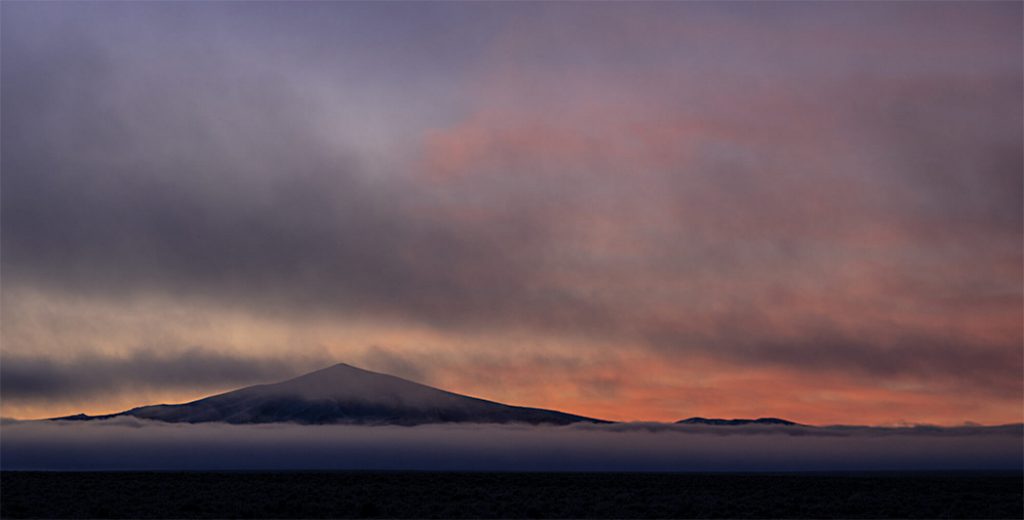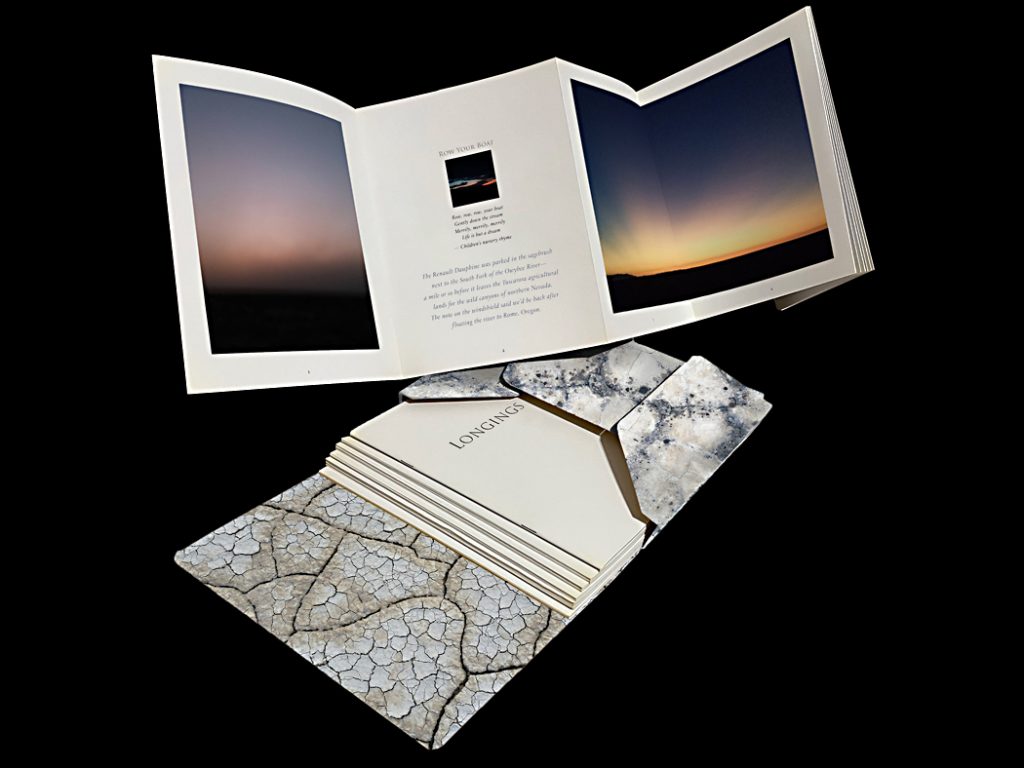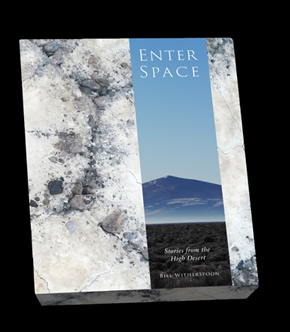
I met Bill Witherspoon a full decade ago when he hired me to join his company, Sky Factory. Before I knew it, I had a plane ticket to Boise, Idaho, where Bill met our party in a GMC truck covered with so much dust that it looked like the bones of an old horse.
Our party drove in a new rental, a spotless black Tahoe, following the dust cloud that Bill’s truck left until we crossed into Oregon, picked up groceries at Burns, and continued over to the Malheur National Wildlife Refuge, our base camp.
On the first day of our deep desert excursion, after what seemed like hours of driving at five miles per hour over tire-busting boulders, he finally signaled to stop.
It was baking hot outside, with nothing but miles of open land around us. The faint off-road track that we had followed all morning stretched to a scorched and endless horizon. I considered myself a nature lover, but this was, well . . . the desert.
Bill hopped out of his old truck and pointed to the towering rock rim over our left flank, then he pointed to a bank of clouds drifting overhead. “The same laws of fluid dynamics that gave the rock rim its shape also form the clouds overhead,” he said.
He had hardly finished the sentence before the white clouds dissolved into the clear blue sky without a single trace. At that moment, I realized I was with someone who saw way beyond appearances. Bill Witherspoon sought the bone marrow of the elemental.
His statement was a precise and probing observation about the laws of physics that govern the desert ecology. The winds that hollow out the rock rims over eons are the same laws of physics that streamline the evanescent clouds at a moment’s notice. The juxtaposition of these colossal time scales—solid rock rims and diaphanous water vapor—took my breath away.
That day, I learned that there was indeed nothing to see in the desert. However, such nothingness contained a hidden temporal and spatial cosmology so immense that it would take a lifetime to uncover. Yet Bill knew what he was talking about. You could see it in his eyes. This man knew how to enter space.

Enter Space—Stories from the High Desert is a record of Bill’s transformation from young man, threadbare artist, and spiritual seeker to seasoned surveyor, conscientious ecologist, and most remarkably, mirror of the desert. Bill has experienced extraordinary things out there—sharing a porch with rattlesnakes, walking among the West’s last wild horses, and even forging a long friendship with a rancher named Dan Barry, who shared a tacit acquiescence that certain events in the desert defy explanation. Bill’s stories have layers that you sense, rather than see. Yet, those layers run deep. They are memorable because they brim with the genuine surprise of one who writes to makes sure that something did, indeed, occur. Something timeless runs through them. It’s almost as if Bill sought to write them before he himself disappeared into the sagebrush wind that sweeps the desert playa.
According to cognitive psychology, the relationship our brain perceives between space and time is asymmetrical; we use space as a measure for time. So what shift befalls our perception of time in the unalloyed atmosphere of a vast and undisturbed open landscape? What would such perceived timelessness do to our appreciation of self?
Would we take a measure of our insignificance in the context of Cosmic Time and merge into an experience of self-transcendence? Or would time itself collapse out of its illusory linearity? Would we experience another time, in place?
Such happenings are known to occur, particularly in the desert. Reality is thin out there. In quiet places like the high steppe desert, time and space may reveal their hidden dynamics.
Bill sought to experience life’s hidden layers, so he took to the desert as a lifelong experiment: How would the vastness of the landscape alter and deepen his perception? How would he register and record such changes?
An avid student of Eastern meditation practices and ancient treatises on sacred geometry, Bill traveled down a long, fruitful road of artistic output—not for personal expression, but as a means of spiritual exploration. He became scientist, guinea pig, and metaphysical explorer, all rolled into one.
The desert, however, had its own ideas, its own cast of characters, and its own designs. In fact, while Bill would leave the desert many times over the ensuing decades, the desert would never leave him. Man and place would be indivisible.
Enter Space is a collection of 27 short stories and 108 photographs of the high Oregon desert collected in five books, each one with a distinct theme—awakenings, longings, flights, gifts, and invocations—that provide the context for the alchemical quality the vast landscape has on the solitary desert dweller.
The stories range in tone and subject matter. Some recollect the impressions and experiences of a young man drawn to one of the most remote areas in North America—the western edge of the 200,000-square-mile Great Basin.
 Others describe the landscape with the zeal of a seasoned naturalist, or dip into the poetics of solitude and the spiritual alchemy present when one approaches the land with reverence and gratitude. Still other stories narrate the artist’s attempt to paint the evanescence of late afternoon, while a select few—brief and poem-like—detail the indelible memory of experiences that defy categorization.
Others describe the landscape with the zeal of a seasoned naturalist, or dip into the poetics of solitude and the spiritual alchemy present when one approaches the land with reverence and gratitude. Still other stories narrate the artist’s attempt to paint the evanescence of late afternoon, while a select few—brief and poem-like—detail the indelible memory of experiences that defy categorization.
Spanning five decades from 1962 to 2019, the stories reveal the deep beauty that hides in plain sight. If one could build a life out of such serendipitous encounters, one might uncover a measure of grace, touched and sensitized by a dimension of life impossible to access in our densely populated environs.
Enter Space is that uncommon gem—a witness to a lifestyle few of us would dare endure, yet one that promises much to the devoted explorer of consciousness. These stories hold many mysteries. How many will unveil before your eyes?
For more information, visit enterspacenow.com or email info@enterspacenow.com.
